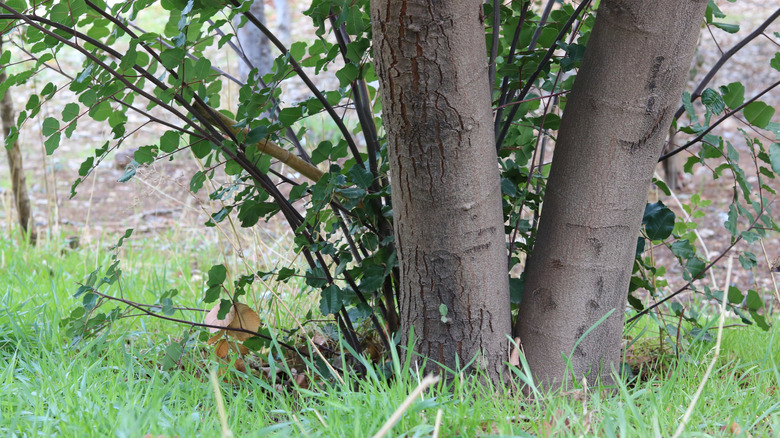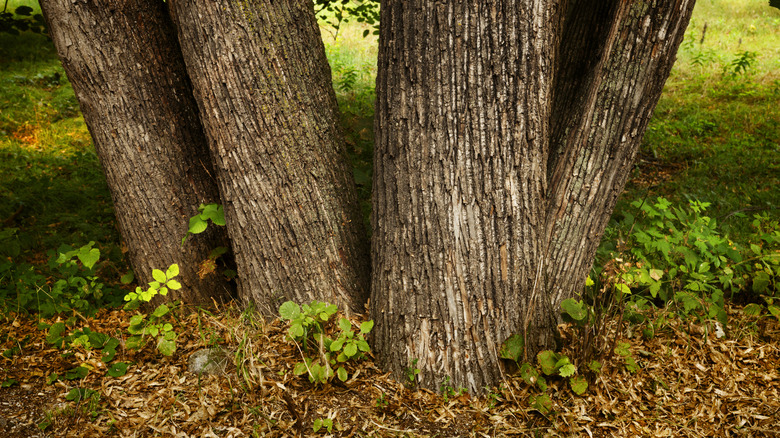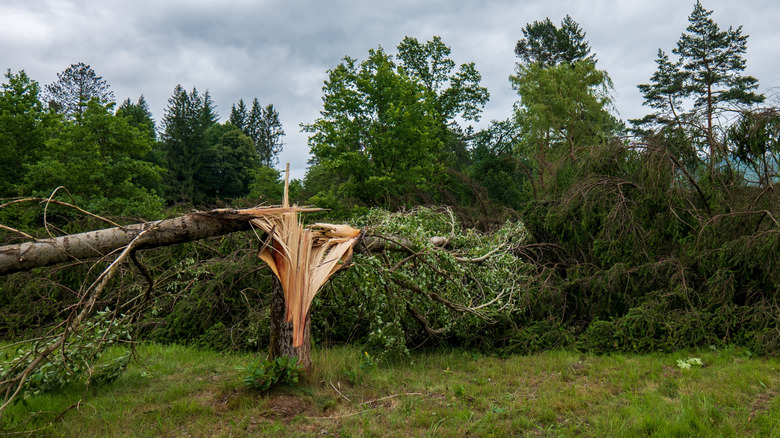What It Means For A Tree's Health If It's Growing Multiple Trunks
When you want to ensure your trees stay healthy in storms, pruning and inspections from arborists can be a vital step. These professionals can find any potential problems and attempt to alleviate them before they threaten the tree's health. If you notice your tree is growing multiple trunks, calling an arborist for an inspection and advice is an important step to take.
Trees with multiple trunks, also called codominant stems, have two stems growing upward from a single point. The plant's health is in the biggest danger from codominant stems when they're about the same diameter and are competing to be the primary stem. The two stems focus much of their growth on going upward quickly, leading to weakness in other areas. Without a single, dominant trunk, the tree's chances of splitting under the stress of a storm or as the plant ages will increase. In fact, many of the trees that break, split, or fall during a windstorm or thunderstorm have this structural problem.
Another potential issue with codominant stems is finding included bark, which occurs when the bark inside the competing trunks grows inside itself, which weakens the tree's health and creates visible bulges in the bark. Taking steps as early as possible to address the problem of codominant stems is important to giving the tree the best chance at survival.
How to recognize the early signs of multiple trunks in a tree
A tree that is forming dangerous multiple trunks will often create a "V" shape where two or more trunks or stems of a similar diameter meet. The two or more trunks might seem to be competing for sunlight and growth, almost like two closely planted separate trees. The multiple trunks on this type of tree may give you an interesting visual element in your yard, but the danger of this tree falling or collapsing is too high to risk allowing the codominant stems to continue to grow.
If you have certain species of trees in your yard, you should look closely for the chance of codominant stems. Oak, ash, maples, and conifers are the most likely species to have issues with growing multiple trunks. Look closely at the area where the multiple trunks meet. The tree's health is in danger if it creates a V shape or a U shape. U shapes are less likely to fail than V shapes when two branches of a similar diameter are growing from the same location, but they still need an inspection from an arborist.
If you notice fungi, small weeds, missing bark, leaking sap, or rotted wood in the V shape, this is a sign of weakness where the trunks meet, creating a greater chance of splitting in the next storm. You might also notice the early signs of cracks, splits, and splinters near or between the codominant stems at the point of attachment.
What you can do about trees that are growing multiple trunks
A common mistake people make when planting a tree is not watching the growth closely enough to spot codominant stems as early as possible, allowing for intervention. If you suspect problems, reach out to an arborist, who will have ideas for a safe solution. to try to avoid a split in a storm.
When the tree is young, the best step is corrective pruning. An arborist might recommend removing one of the two stems, especially if one is slightly smaller. Creating a single, strong stem provides a better chance at a long lifespan for the tree compared to allowing the multiple trunks to continue to grow. Waiting too long might eliminate pruning as an option, though. If the tree is too large to prune without harming it, crown reduction may be helpful. Arborists will shorten the branches near the top of the crown, reducing the weight and stress on the V shape where the codominant stems meet and hopefully reducing the chance of a failure. Some arborists may suggest cabling the tree to reduce the risk of structural failure. Cabling and bracing provides extra support to reduce the chance of splitting.
If the codominant stems are not repairable, this might be a sign that tree removal is the right decision. You can eliminate the risk of injury or property damage by preemptively removing a damaged tree with multiple trunks before it has a chance to split and fall in the next storm.


